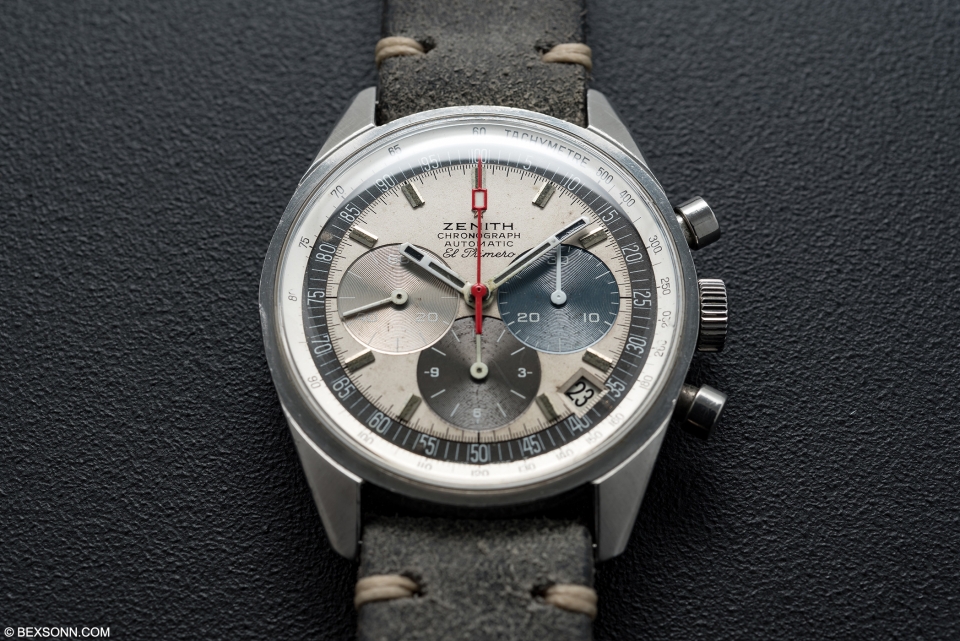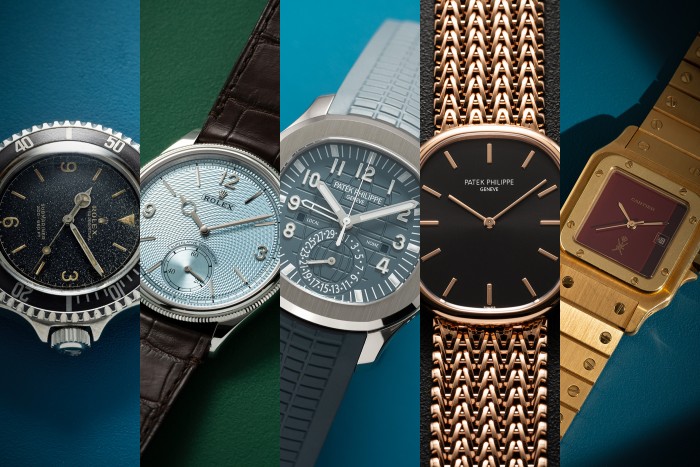Last weekend, Watches of Knightsbridge’s last auction of this year took place and we thought it would be good to see how some of the lots we highlighted performed. As mentioned, leading up to this auction we were in Geneva, visiting the likes of Phillips, Christie’s, Antiquorum and Sotheby’s. Although they don’t exhibit the super high-end pieces from the mentioned auction houses, they do have some really intriguing pieces that are perhaps more attainable. It was also good to see some of the more underrated lots perform really well on the day and exceed their higher estimates.
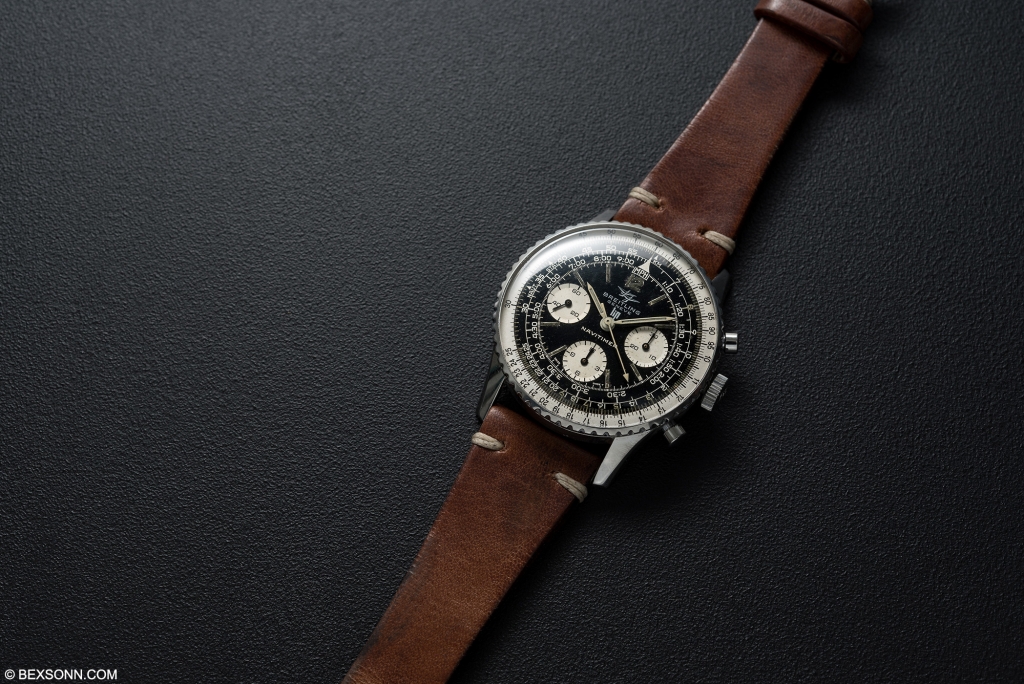 Lot 50, was this 1966 Navitimer, which was rather typical of the pieces made in the 60s, it features a reverse panda dial with a white outer slide rule scale, twinjet logo and houses the revered Venus 178 calibre; though there is one small detail that makes it standout. Beneath the wording Genève, you’ll notice the French manufacture: Lip. Lip was a well-known French manufacture that offered great watches at reasonable prices, ones of which we’ve highlighted before. It was such an important player in France during the middle of the 20th century that Breitling sought a partnership for local distribution, leading to these double-signed dials – thus making this example rather special. How much of a difference did this little but significant detail make in the final hammer price? It would appear not that much, with a final sale price of £4000 but how much of a difference will this make in the future – who knows?
Lot 50, was this 1966 Navitimer, which was rather typical of the pieces made in the 60s, it features a reverse panda dial with a white outer slide rule scale, twinjet logo and houses the revered Venus 178 calibre; though there is one small detail that makes it standout. Beneath the wording Genève, you’ll notice the French manufacture: Lip. Lip was a well-known French manufacture that offered great watches at reasonable prices, ones of which we’ve highlighted before. It was such an important player in France during the middle of the 20th century that Breitling sought a partnership for local distribution, leading to these double-signed dials – thus making this example rather special. How much of a difference did this little but significant detail make in the final hammer price? It would appear not that much, with a final sale price of £4000 but how much of a difference will this make in the future – who knows?
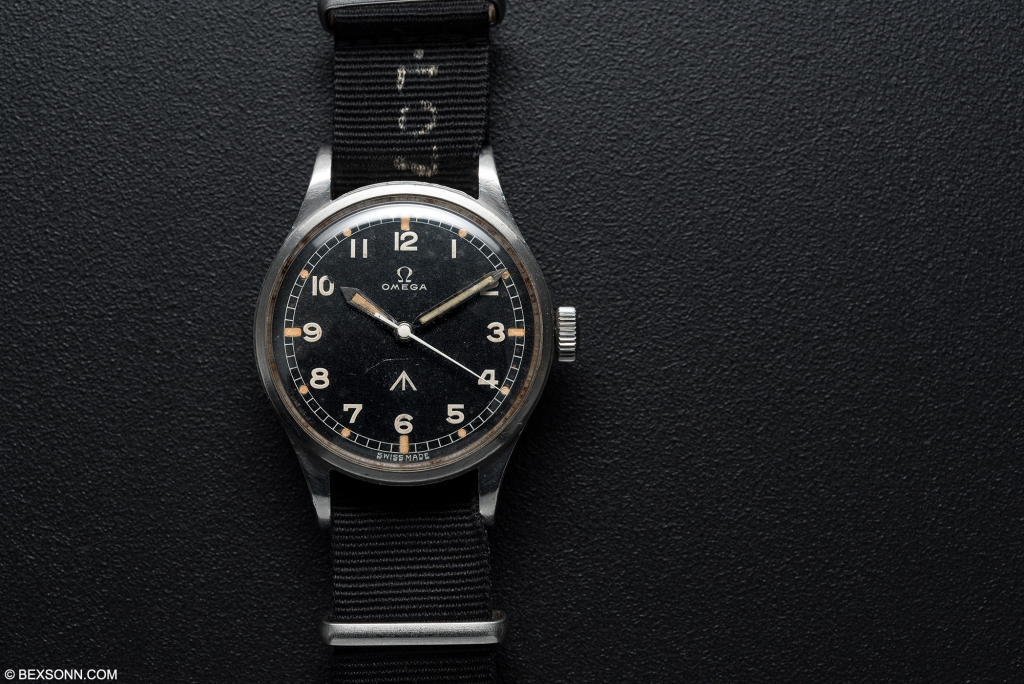 We also highlighted this charming but not perfect Omega ‘Thin Arrow’ CK2777-SC. Designed specifically by Omega to meet the stringent specifications set out by the Ministry of Defence (MoD) under a detailed document called DEF-3 and amended in 1959 for all HM Forces military ‘issued’ timepieces. However, because of a recall by the MoD, very few Omega RAF CK2777’s still exist in close to original condition. That said, this example still featured its original thin arrow black matte dial, though the radium lume on the dial and hands has been swapped out for something a lot safer. How did it perform? It sold for £3,600, just above its lowest estimate.
We also highlighted this charming but not perfect Omega ‘Thin Arrow’ CK2777-SC. Designed specifically by Omega to meet the stringent specifications set out by the Ministry of Defence (MoD) under a detailed document called DEF-3 and amended in 1959 for all HM Forces military ‘issued’ timepieces. However, because of a recall by the MoD, very few Omega RAF CK2777’s still exist in close to original condition. That said, this example still featured its original thin arrow black matte dial, though the radium lume on the dial and hands has been swapped out for something a lot safer. How did it perform? It sold for £3,600, just above its lowest estimate.
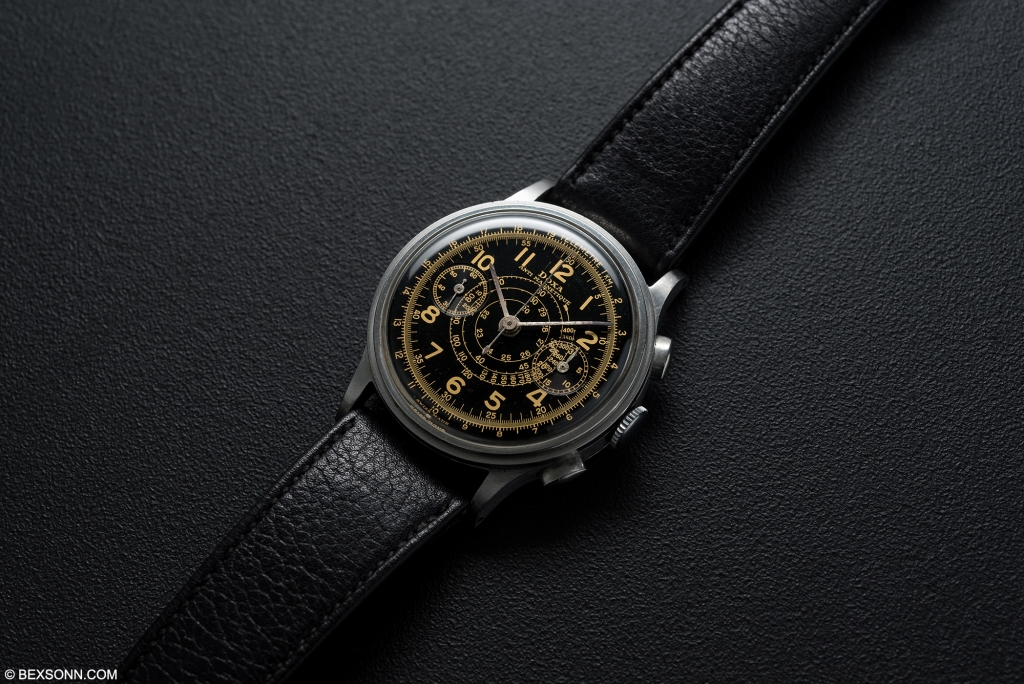 Then there was the clean and downright gorgeous Doxa chronograph. What is interesting to note, it’s not just Doxa chronographs of this ilk that have become popular but pretty much any 40s, 50s and early 60s chronographs made in this same manner and of this size have become decidedly sought-after. As mentioned, if it has a glossy black dial, multi-scale measurements it will do well. Overall, the condition, quality and rarity of this watch made it one of my favourite pieces in the auction and the hammer price was £1,000 above its higher estimate – selling for £4,000.
Then there was the clean and downright gorgeous Doxa chronograph. What is interesting to note, it’s not just Doxa chronographs of this ilk that have become popular but pretty much any 40s, 50s and early 60s chronographs made in this same manner and of this size have become decidedly sought-after. As mentioned, if it has a glossy black dial, multi-scale measurements it will do well. Overall, the condition, quality and rarity of this watch made it one of my favourite pieces in the auction and the hammer price was £1,000 above its higher estimate – selling for £4,000.
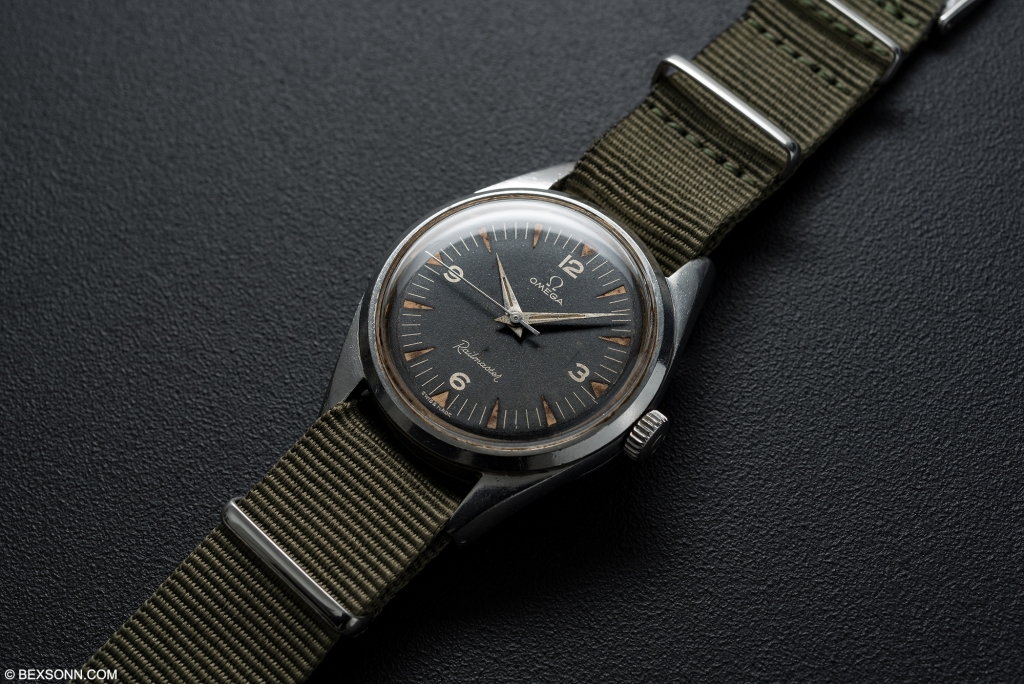 Omega wristwatches from the 1957 trilogy have enjoyed their time in the spotlight of late, with values for earlier examples fetching rather handsome prices, with none more so than the Speedmaster CK2915-1 – completely obliterating any previous auction records of recent over at Bukowski’s in Norway. As mentioned before, of the trilogy of Omega watches released in 1957, the Railmaster is undoubtedly my favourite. This Railmaster Ref. 2914-3 was in good, honest condition and featured a matte black dial, which has aged and sported luminous inset marker, and applied Arabic numerals at 3,6,9 and 12, and steel dauphine hands. But, even more interesting, it features its original Naïad crown – a detail that makes a difference. When the hammer fell on this Railmaster, it sold for £7,400.
Omega wristwatches from the 1957 trilogy have enjoyed their time in the spotlight of late, with values for earlier examples fetching rather handsome prices, with none more so than the Speedmaster CK2915-1 – completely obliterating any previous auction records of recent over at Bukowski’s in Norway. As mentioned before, of the trilogy of Omega watches released in 1957, the Railmaster is undoubtedly my favourite. This Railmaster Ref. 2914-3 was in good, honest condition and featured a matte black dial, which has aged and sported luminous inset marker, and applied Arabic numerals at 3,6,9 and 12, and steel dauphine hands. But, even more interesting, it features its original Naïad crown – a detail that makes a difference. When the hammer fell on this Railmaster, it sold for £7,400.
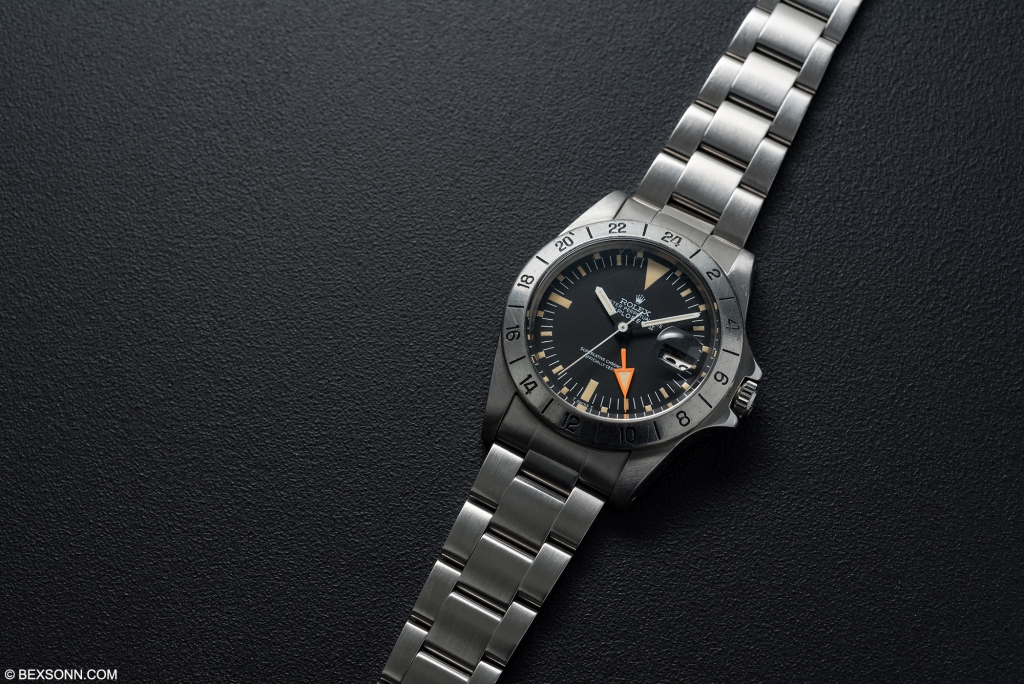 Then there’s lot 241: a Rolex Explorer ref. 1655. As mentioned before, the Explorer II never really had the same allure as a Submariner, Daytona or GMT, but there is a special appreciation for these pieces among collectors. The 1655 was never a popular watch while it was produced but maybe this was down to marketing, who knows but you don’t see them as often as the aforementioned pieces. Its unpopularity is perhaps what makes it what it is today and adding to the appeal of this example was the fact it came with its original box, papers and purchase receipt, that was dated 1975. However, the piece itself is dated 1972, which displays the 1655 just wasn’t a quick seller. Hammer price? £16,500, just above its lower estimate.
Then there’s lot 241: a Rolex Explorer ref. 1655. As mentioned before, the Explorer II never really had the same allure as a Submariner, Daytona or GMT, but there is a special appreciation for these pieces among collectors. The 1655 was never a popular watch while it was produced but maybe this was down to marketing, who knows but you don’t see them as often as the aforementioned pieces. Its unpopularity is perhaps what makes it what it is today and adding to the appeal of this example was the fact it came with its original box, papers and purchase receipt, that was dated 1975. However, the piece itself is dated 1972, which displays the 1655 just wasn’t a quick seller. Hammer price? £16,500, just above its lower estimate.
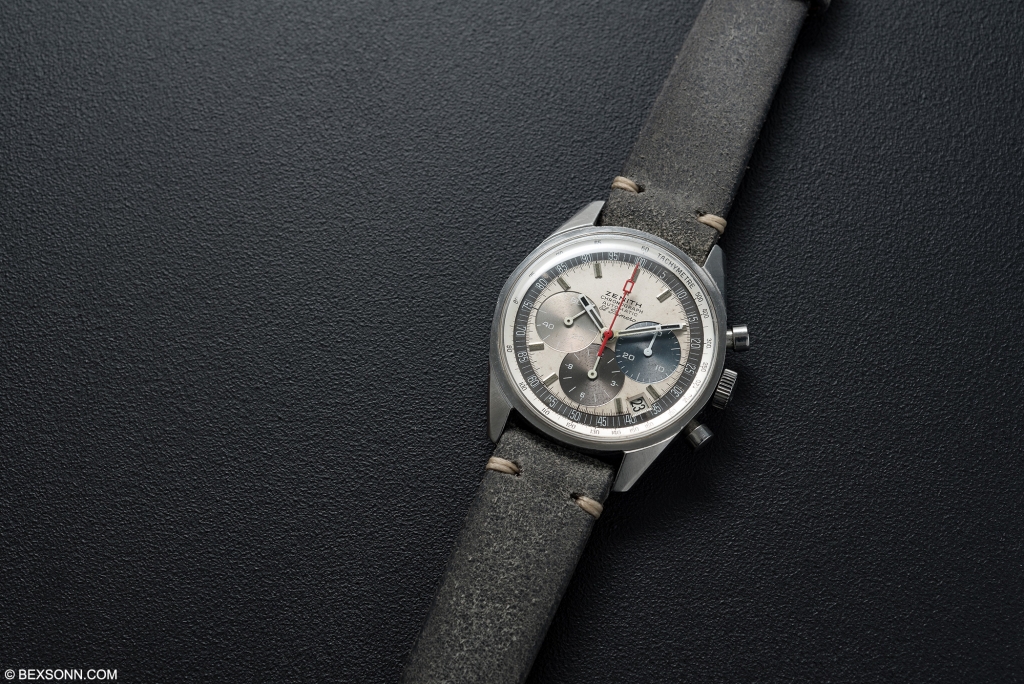 Last but not least, another favourite of ours; the Zenith El Primero A386. The El Primero is famously known for being the first automatic chronograph to grace the market – hence the name (The First). While it is debatable about who was first to market out of Heuer/Hamilton-Buren/Breitling, Seiko or Zenith, there is no doubt that it was Zenith who actually announced their automatic chronograph movement first, in 1969. This ref. A386 El Primero featured the iconic tri-colour, large overlapping chronograph registers, with date aperture at 16:30, baton hands and red chronograph sweeping-seconds hand. Though it wasn’t the best example I’d personally seen, it was in great, honest condition, with great patina – adding charm. But just how charming was it? When the hammer fell on this piece, it sold for £9,500 – £1,500 above it’s lower estimate.
Last but not least, another favourite of ours; the Zenith El Primero A386. The El Primero is famously known for being the first automatic chronograph to grace the market – hence the name (The First). While it is debatable about who was first to market out of Heuer/Hamilton-Buren/Breitling, Seiko or Zenith, there is no doubt that it was Zenith who actually announced their automatic chronograph movement first, in 1969. This ref. A386 El Primero featured the iconic tri-colour, large overlapping chronograph registers, with date aperture at 16:30, baton hands and red chronograph sweeping-seconds hand. Though it wasn’t the best example I’d personally seen, it was in great, honest condition, with great patina – adding charm. But just how charming was it? When the hammer fell on this piece, it sold for £9,500 – £1,500 above it’s lower estimate.
FINAL WORD
Watches of Knightsbridge’s September auction was possibly one of their sparser auctions, with only 333 lots. However, it was definitely one of their better ones, with quality trumping quantity – hence 71% of all lots being sold – indicating this being one of their most successful auctions percentage-wise. This November auction had even less, with 308 lots but made it their most successful auction to date, percentage-wise, selling 75% of all lots offered. Less, really is more.
To view all the results from this most recent Watches of Knightsbridge Auction, click here.
